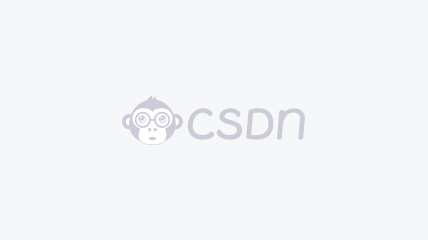<h1 align="center"> LittlevGL - Open-source Embedded GUI Library</h1>
<p align="center">
<a href="https://github.com/littlevgl/lvgl/blob/master/LICENCE.txt"><img src="https://img.shields.io/badge/licence-MIT-blue.svg"></a>
<a href="https://github.com/littlevgl/lvgl/releases/tag/v6.1.2"><img src="https://img.shields.io/badge/version-6.1.2-blue.svg"></a>
</p>
<p align="center">
<img src="https://littlevgl.com/github/cover_ori_reduced_2.gif">
</p>
<p align="center">
LittlevGL provides everything you need to create a Graphical User Interface (GUI) on embedded systems with easy-to-use graphical elements, beautiful visual effects and low memory footprint.
</p>
<h4 align="center">
<a href="https://littlevgl.com">Website </a> ·
<a href="https://littlevgl.com/live-demo">Live demo</a> ·
<a href="https://docs.littlevgl.com/en/html/get-started/pc-simulator.html">Simulator</a> ·
<a href="https://forum.littlevgl.com">Forum</a> ·
<a href="https://docs.littlevgl.com/">Docs</a> ·
<a href="https://blog.littlevgl.com/">Blog</a>
</h4>
---
- [Features](#features)
- [Supported devices](#supported-devices)
- [Quick start in a simulator](#quick-start-in-a-simulator)
- [Add LittlevGL to your project](#add-littlevgl-to-your-project)
- [Learn the basics](#learn-the-basics)
- [Examples](#examples)
- [Contributing](#contributing)
- [Donate](#donate)
## Features
* **Powerful building blocks** buttons, charts, lists, sliders, images, etc.
* **Advanced graphics** with animations, anti-aliasing, opacity, smooth scrolling
* **Simultaneously use various input devices** touchscreen, mouse, keyboard, encoder, buttons, etc.
* **Simultaneously use multiple displays** i.e. monochrome and color display
* **Multi-language support** with UTF-8 encoding
* **Fully customizable** graphical elements
* **Hardware independent** to use with any microcontroller or display
* **Scalable** to operate with little memory (64 kB Flash, 10 kB RAM)
* **OS, External memory and GPU** supported but not required
* **Single frame buffer** operation even with advances graphical effects
* **Written in C** for maximal compatibility
* **Micropython Binding** exposes [LittlevGL API in Micropython](https://blog.littlevgl.com/2019-02-20/micropython-bindings)
* **Simulator** to develop on PC without embedded hardware
* **Tutorials, examples, themes** for rapid development
* **Documentation** and API references
## Supported devices
Basically, every modern controller - which is able to drive a display - is suitable to run LittlevGL. The minimal requirements:
- 16, 32 or 64 bit microcontroller or processor
- > 16 MHz clock speed is recommended
- Flash/ROM: > 64 kB for the very essential components (> 180 kB is recommended)
- RAM:
- Static RAM usage: ~8..16 kB depending on the used features and objects types
- Stack: > 2kB (> 4 kB is recommended)
- Dynamic data (heap): > 4 KB (> 16 kB is recommended if using several objects).
Set by `LV_MEM_SIZE` in *lv_conf.h*.
- Display buffer: > *"Horizontal resolution"* pixels (> 10 × *"Horizontal resolution"* is recommended)
- C99 or newer compiler
*Note that the memory usage might vary depending on the architecture, compiler and build options.*
Just to mention some **platforms**:
- STM32F1, STM32F3, [STM32F4](https://blog.littlevgl.com/2017-07-15/stm32f429_disco_port), [STM32F7](https://github.com/littlevgl/stm32f746_disco_no_os_sw4stm32)
- Microchip dsPIC33, PIC24, PIC32MX, PIC32MZ
- NXP Kinetis, LPC, iMX
- [Linux frame buffer](https://blog.littlevgl.com/2018-01-03/linux_fb) (/dev/fb)
- [Raspberry PI](http://www.vk3erw.com/index.php/16-software/63-raspberry-pi-official-7-touchscreen-and-littlevgl)
- [Espressif ESP32](https://github.com/littlevgl/lv_port_esp32)
- Nordic nrf52
- Quectell M66
## Quick start in a simulator
The easiest way to get started with LittlevGL is to run it in a simulator on your PC without any embedded hardware.
Choose a project with your favourite IDE:
| Eclipse | CodeBlocks | Visual Studio | PlatformIO | Qt Creator |
|-------------|-------------|---------------|-----------|------------|
| [](https://github.com/littlevgl/pc_simulator_sdl_eclipse) | [](https://github.com/littlevgl/pc_simulator_win_codeblocks) | [](https://github.com/littlevgl/visual_studio_2017_sdl_x64) | [](https://github.com/littlevgl/pc_simulator_sdl_platformio) | [](https://blog.littlevgl.com/2019-01-03/qt-creator) |
| Cross-platform<br>with SDL<br>(Recommended on<br>Linux and Mac) | Native Windows | Windows<br>with SDL | Cross-platform<br>with SDL | Cross-platform<br>with SDL |
## Add LittlevGL to your project
The steps below show how to setup LittlevGL on an embedded system with a display and a touchpad.
You can use the [Simulators](https://docs.littlevgl.com/en/html/get-started/pc-simulator) to get ready to use projects which can be run on your PC.
1. [Download](https://littlevgl.com/download) or [Clone](https://github.com/littlevgl/lvgl) the library
2. Copy the `lvgl` folder into your project
3. Copy `lvgl/lv_conf_template.h` as `lv_conf.h` next to the `lvgl` folder and set at least `LV_HOR_RES_MAX`, `LV_VER_RES_MAX` and `LV_COLOR_DEPTH`.
4. Include `lvgl/lvgl.h` where you need to use LittlevGL related functions.
5. Call `lv_tick_inc(x)` every `x` milliseconds **in a Timer or Task** (`x` should be between 1 and 10). It is required for the internal timing of LittlevGL.
6. Call `lv_init()`
7. Create a display buffer for LittlevGL
```c
static lv_disp_buf_t disp_buf;
static lv_color_t buf[LV_HOR_RES_MAX * 10]; /*Declare a buffer for 10 lines*/
lv_disp_buf_init(&disp_buf, buf, NULL, LV_HOR_RES_MAX * 10); /*Initialize the display buffer*/
```
8. Implement and register a function which can **copy a pixel array** to an area of your display:
```c
lv_disp_drv_t disp_drv; /*Descriptor of a display driver*/
lv_disp_drv_init(&disp_drv); /*Basic initialization*/
disp_drv.flush_cb = my_disp_flush; /*Set your driver function*/
disp_drv.buffer = &disp_buf; /*Assign the buffer to the display*/
lv_disp_drv_register(&disp_drv); /*Finally register the driver*/
void my_disp_flush(lv_disp_t * disp, const lv_area_t * area, lv_color_t * color_p)
{
int32_t x, y;
for(y = area->y1; y <= area->y2; y++) {
for(x = area->x1; x <= area->x2; x++) {
set_pixel(x, y, *color_p); /* Put a pixel to the display.*/
color_p++;
}
}
lv_disp_flush_ready(disp); /* Indicate you are ready with the flushing*/
}
```
9. Implement and register a function which can **read an input device**. E.g. for a touch pad:
```c
lv_indev_drv_init(&indev_drv); /*Descriptor of a input device driver*/
indev_drv.type = LV_INDEV_TYPE_POINTER; /*Touch pad is a pointer-like device*/
indev_drv.read_cb = my_touchpad_read; /*Set your driver function*/
lv_indev_drv_register(&indev_drv); /*Finally register the driver*/
bool my_touchpad_read(lv_indev_drv_t * indev_driver, lv_indev_data_t * data)
{
static lv_coord_t last_x = 0;
static lv_coord_t last_y = 0;
/*Save the state and save the pressed coordinate*/
data->state = touchpad_is_pressed() ? LV_INDEV_STATE_PR : LV_INDEV_STATE_REL;
if(data->state == LV_INDEV_STATE_PR) touchpad_get_xy(&last_x, &last_y);
/*Set the coordinates (if released use the last pressed coordinates)*/
data->point.x = last_x;
data->point.y = last_y;
return false; /*Return `false` becaus

Mascreda
- 粉丝: 31
- 资源: 7
最新资源
- sqlserver jtds 驱动
- 微电网逆变器控制策略与并网仿真研究:下垂控制仿真模型及其参考资料综述,微电网逆变器控制策略与并网仿真研究:下垂控制仿真模型及其应用探讨,微电网逆变器控制、并网仿真、下垂控制等仿真模型以及一些参考资料
- DeepSeek清华大学全套学习资料1-5
- 【毕业设计】Python的Django-html深度学习的安全帽佩戴检测系统源码(完整前后端+mysql+说明文档+LW+PPT).zip
- 【毕业设计】Python的Django-html深度学习的聊天机器人设计源码(完整前后端+mysql+说明文档+LW+PPT).zip
- 【毕业设计】Python的Django-html搜索的目标站点内容监测系统源码(完整前后端+mysql+说明文档+LW+PPT).zip
- 蒙特卡洛思想下的充电汽车负荷曲线生成研究报告:探索1万台汽车的充电负荷曲线模拟,基于蒙特卡洛思想的充电汽车充电负荷曲线生成研究报告-涵盖负荷曲线的精细分析与实际应用解析,基于蒙特卡洛思想生成1000
- DeepSeek 保姆级新手教程
- MATLAB下电转气协同与碳捕集垃圾焚烧虚拟电厂优化调度复现程序及仿真结果展示,基于MATLAB和CPLEX的碳捕集与垃圾焚烧虚拟电厂电转气协同优化调度算法研究,MATLAB代码:计及电转气协同的含碳
- 基于直齿行星齿轮传动系统的ode45求解方法及自由度收敛研究,基于直齿行星齿轮传动系统的ODE45求解及其自由度全收敛分析研究,直齿行星齿轮传动系统ode45求解,自由度全部收敛 本人主攻齿轮动力学
- 洪泽湖流域1951-2008年面雨量变化特征与趋势分析及其防洪减灾应用
- 基于TMS320F2812的PMSM有传感器矢量控制双闭环程序系统,TMS320F2812 DSP矢量控制实现PMSM传感器转速与电流双闭环控制程序,矢量控制dsp2812 主控为TMS320F281
- blender插件,mmd-tools-v2.10.3
- 黑龙江省近45年积温变化
- SVPWM过调制控制技术:深入解析与实际应用,基于SVPWM技术的过调制控制方法的研究与应用,SVPWM过调制控制方法 ,SVPWM; 过调制; 控制方法; 数字信号处理,SVPWM过调制控制策略
- 基于PI控制器与滑膜控制器的三相永磁同步电机无速度传感器控制策略及其SVPWM-MRAS-PI SMC算法研究与应用,基于PI控制器与滑膜控制器的三相永磁同步电机无速度传感器控制策略研究:SVPWM
资源上传下载、课程学习等过程中有任何疑问或建议,欢迎提出宝贵意见哦~我们会及时处理!
点击此处反馈
















